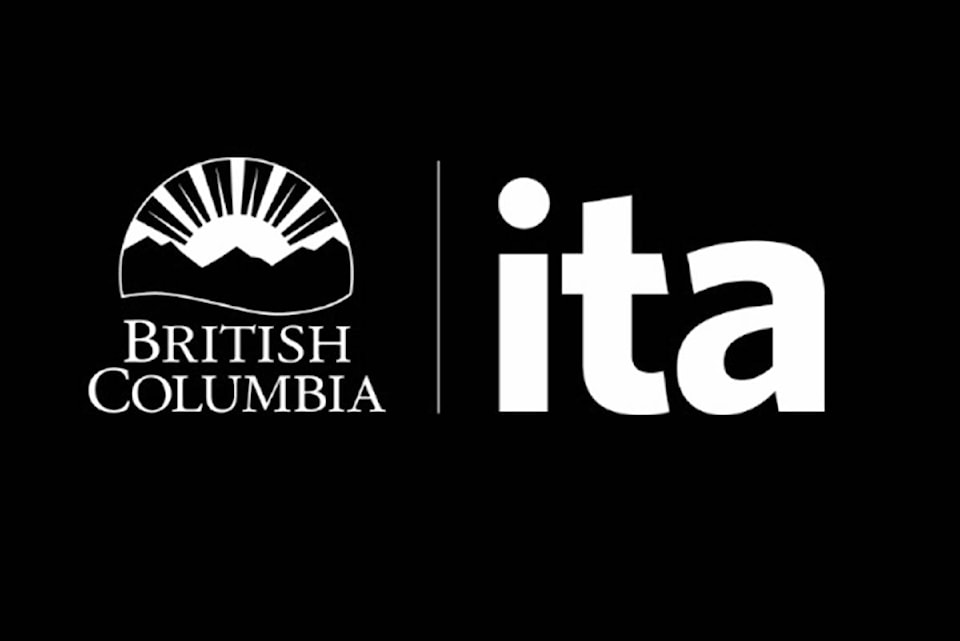Ministry of Advanced Education, Skills and Training
VICTORIA - An apprenticeship is a great ticket to a well-paying job and an exciting career that can open the door to opportunities throughout British Columbia, across Canada and around the globe.
Nov. 5-11, 2017, marks Apprenticeship Recognition Week in British Columbia. Below is a breakdown of everything you need to know about apprenticeship training in British Columbia.
How do I get started in the trades?
* Visiting the Industry Training Authority (ITA) B.C. website: http://www.itabc.ca/
* There are 15 public post-secondary and 25 non-public trades training providers in B.C that deliver trades programs.
* You will need an employer to sponsor you for on the job work hours. The ITA has 15 regional apprentice advisors who can support you with job search and starting your apprenticeship.
You can also get help from your high school counsellor, visit your local post-secondary education provider or find an employer at WorkBC offices or online: https://www.workbc.ca/apprenticejobmatch
How much can I expect to be paid?
* A trade ticket earned through an apprenticeship is a pathway to a successful career. It is a ticket to an above-average income in high-demand jobs with a variety of career paths or entrepreneurial opportunities.
* The hourly wage varies depending on the apprenticeship but a journeyperson can earn a median hourly wage of between $30 and $50.
How much does it cost?
* The costs associated with completing an apprenticeship can vary greatly for each program. Electrical students account for about 20% of all trades students. Total tuition cost over four years for an electrical apprentice is approximately $4,000 to $5,000, depending on where you study. This does not include books or supplies nor does it reflects provincial and federal apprenticeship supports available to apprentices such as tax credits.
What is an apprenticeship and how long does it take?
* Apprenticeship requirements vary between trades, but most apprenticeships take four years to complete with 80% of the learning taking place at the worksite and 20% with an ITA-designated training provider.
Are there opportunities in the trades?
* Almost 110,000 trades jobs are expected to open up in B.C. by 2025.
* Top high-demand trades include: carpenters, automotive service technicians, electricians, welders and heavy-duty equipment mechanics.
Are there opportunities for women?
* More than 10% of apprentices in British Columbia are women.
* As of March 31, 2017, the ITA lists the Top 10 apprenticeships for females as: professional cook, hairstylist, construction electrician, baker, carpenter, welder, plumber, landscape horticulturist, automotive service technician and cabinetmaker (joiner).
Are there opportunities for Indigenous people?
* Currently just over 6% of apprentices in British Columbia are Indigenous.
* As of March 31, 2017, the ITA lists the Top 10 apprenticeships for Indigenous people as: carpenter, construction electrician, professional cook, construction craft worker (labourer), plumber, welder, heavy duty equipment technician, heavy equipment operator, automotive service technician, and industrial mechanic (millwright).
Are apprentices happy with the training they receive?
* According to the 2016 Apprenticeship Student Outcome Survey of 2,565 former students, 93% of respondents were very satisfied or satisfied with the in-school training they received.
What is the Industry Training Authority?
* The Industry Training Authority leads and co-ordinates the province’s skilled trades system in British Columbia.
* The Industry Training Authority works with employers, apprentices, industry, labour, training providers and government to support the skilled trades in the province. These actions include funding, training, issuing credentials, supporting apprenticeships, setting program standards and increasing opportunities in the trades.
What is there for young people?
* In partnership with the Ministry of Education and secondary schools, the ITA delivers Youth Trades Training programs that help get students involved and interested in the trades earlier in their school years.
Please visit: http://youth.itabc.ca/
How do employers work with apprentices?
* Sponsoring an apprentice is key for employers to guarantee skilled, prepared workers to meet labour demands. The benefits of hiring an apprentice go beyond financial reasons. It is about succession planning and training high-quality workers who fit the business needs of employers.
* There were over 11,000 registered employer sponsors of apprentices in B.C. at the end of 2016-17.
* According to the Canadian Apprenticeship Forum, for every dollar an employer invests in apprenticeship training, they receive an average return on investment of $1.47.
* The provincial and federal governments provide income tax credits for employers of apprentices registered in Industry Training Authority apprenticeship programs.
